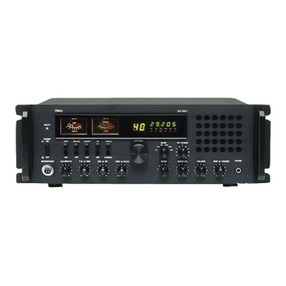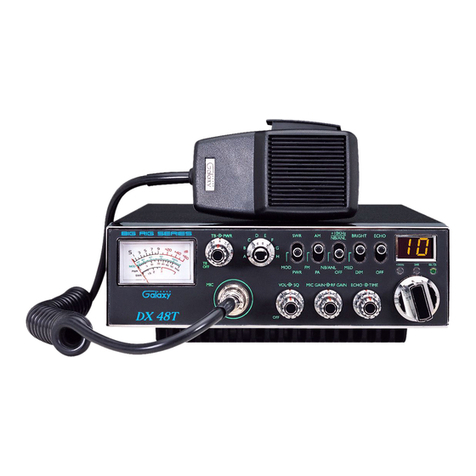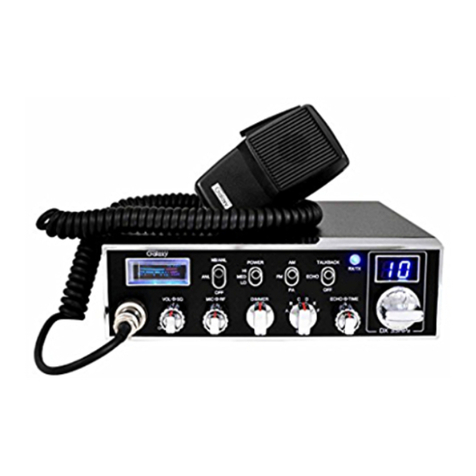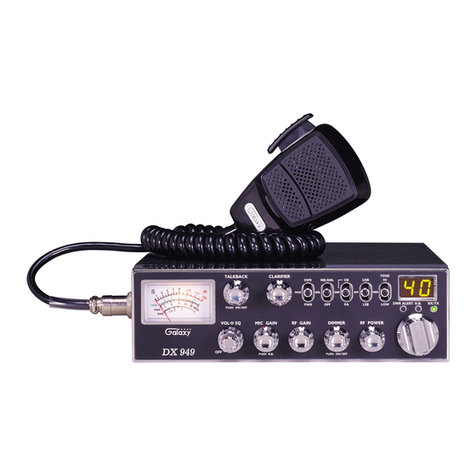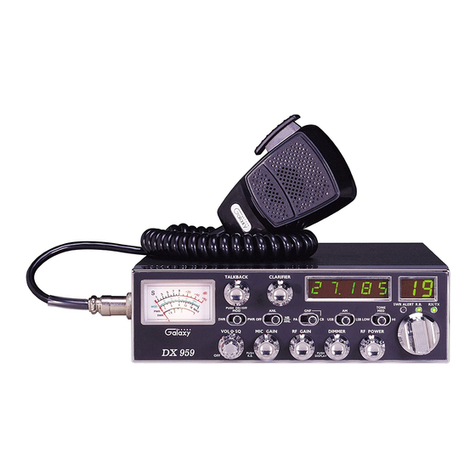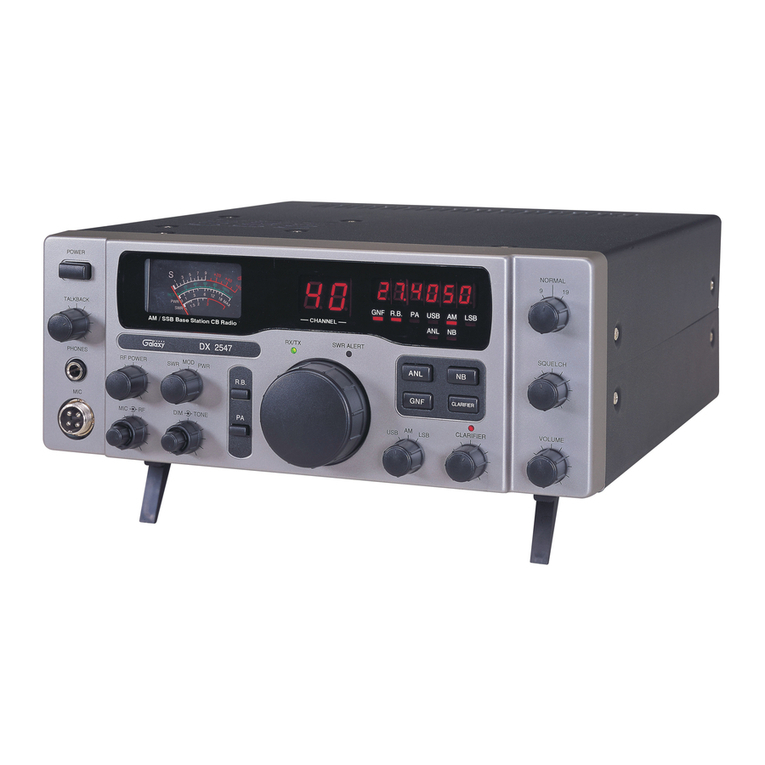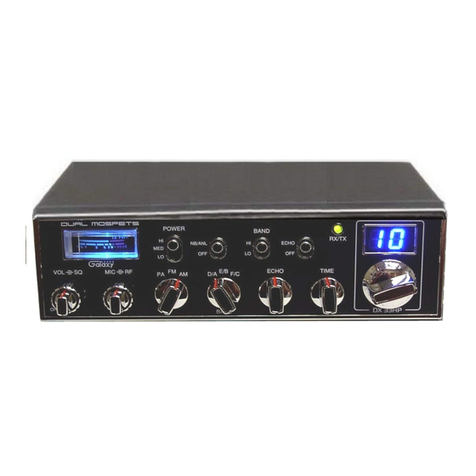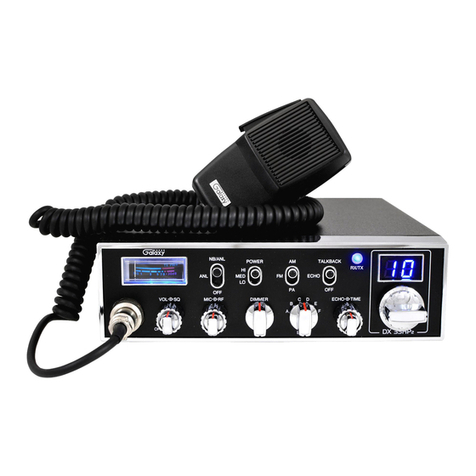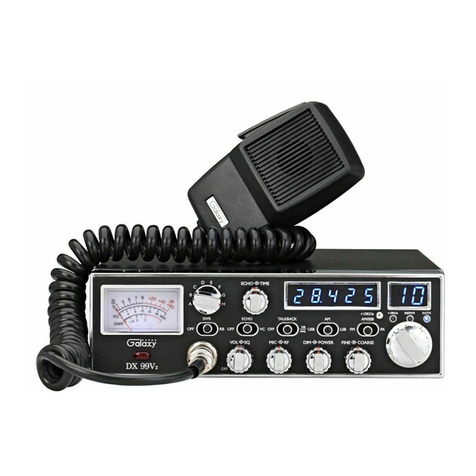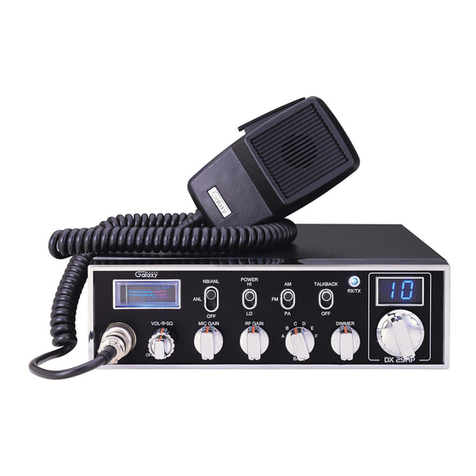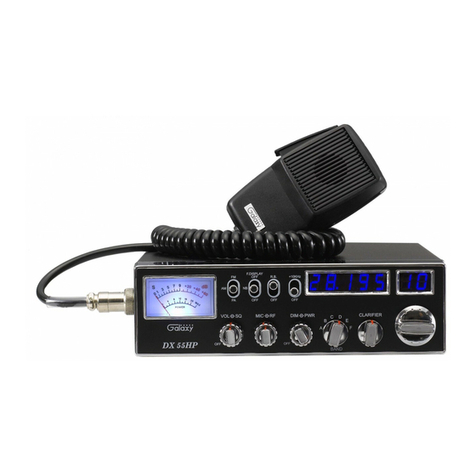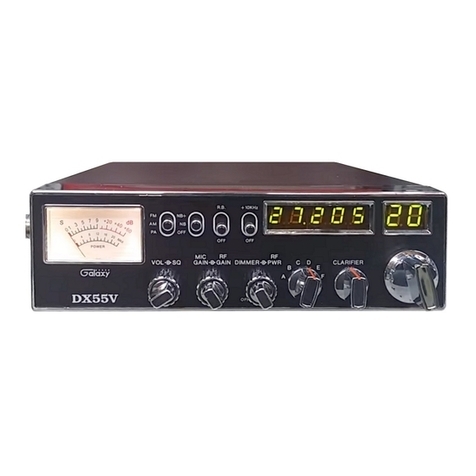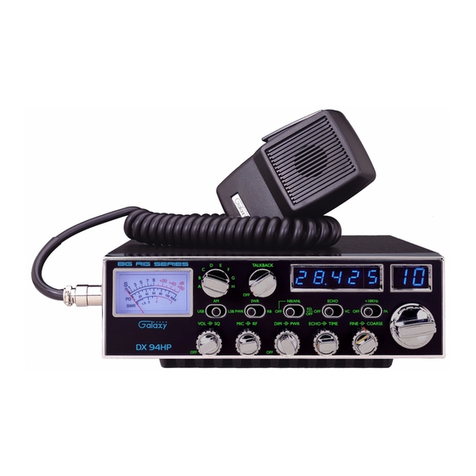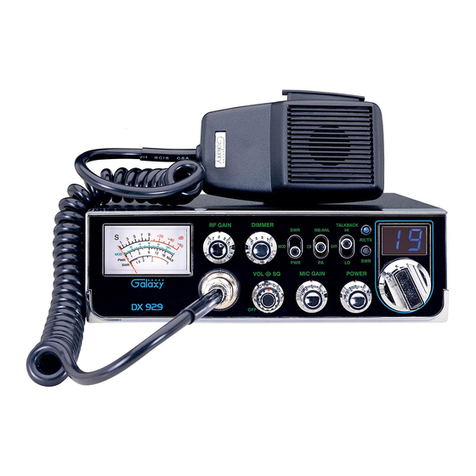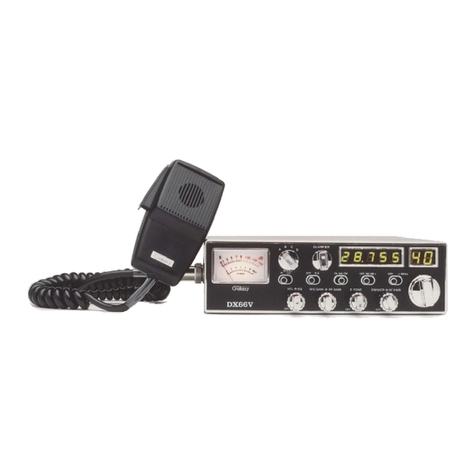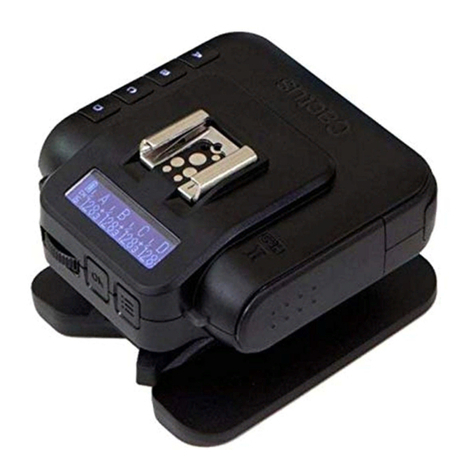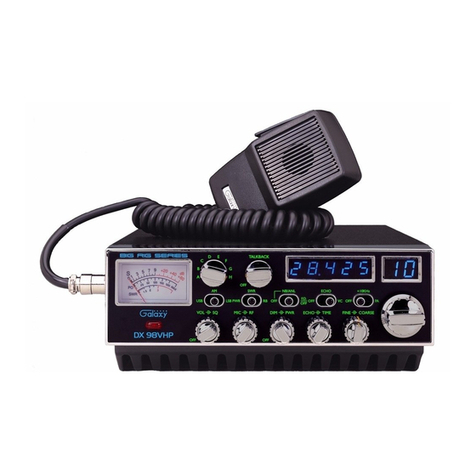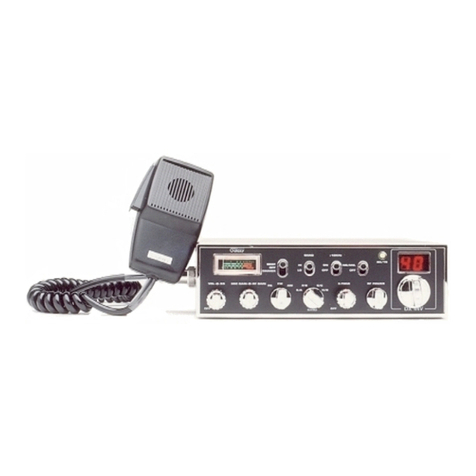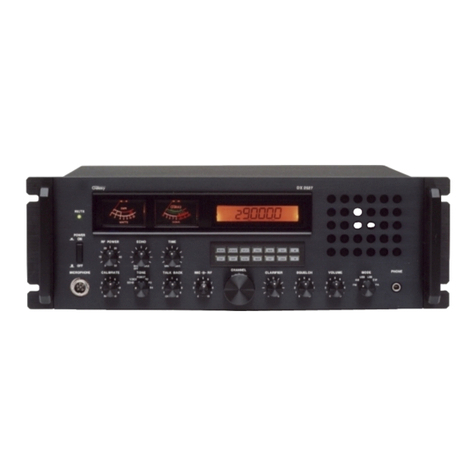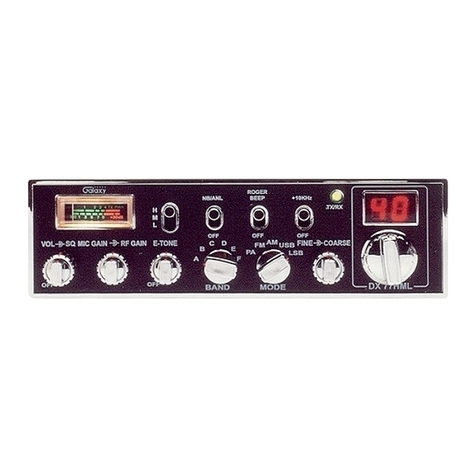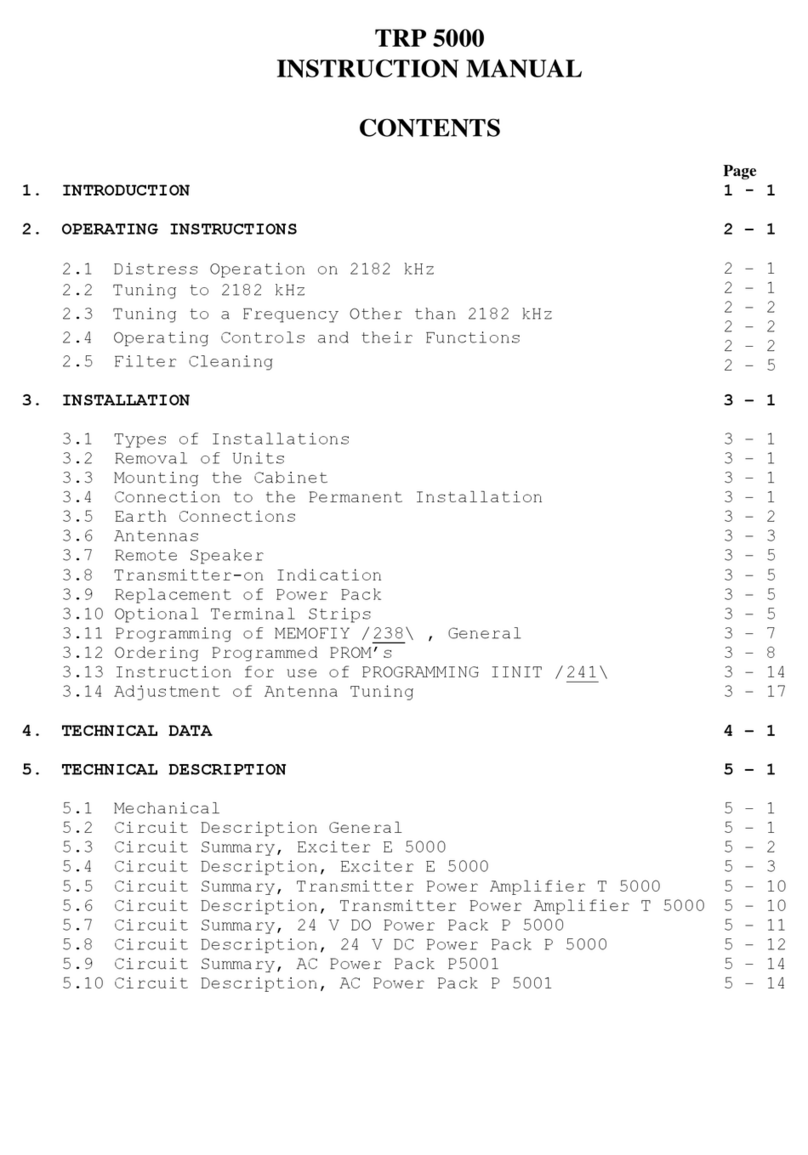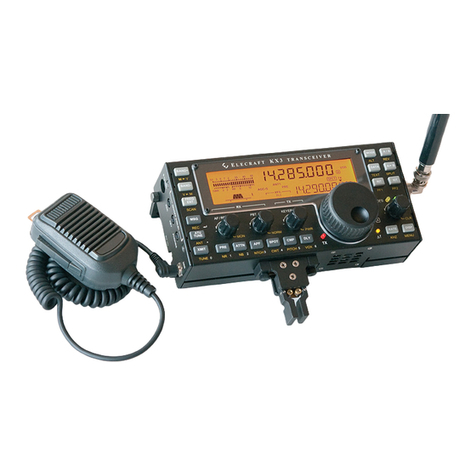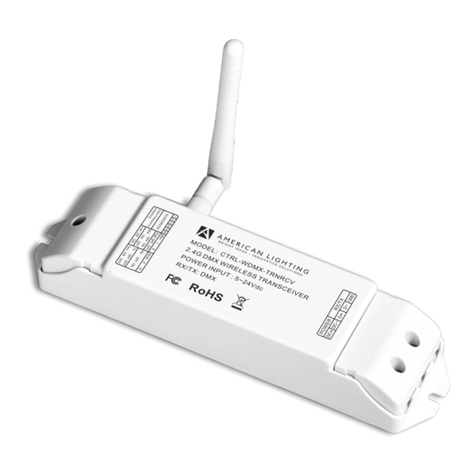
- 6 -
5. SQUELCH CONTROL: This knob is used to eliminate background noise
being heard through the receiver, which can be disturbing when no
transmissions are being heard through the receiver. To use this feature, turn
the knob fully counterclockwise and then turn clockwise slowly until the
background noise is just eliminated. Further clockwise rotation will increase
the threshold level which a signal must overcome in order to be heard. Only
strong signals will be heard at a maximum clockwise setting.
6. MIC GAIN CONTROL/PUSH TB OFF SWITCH: Adjusts the
microphone gain in the transmit and PA modes. This controls the gain to the
extent that full talk power is available several inches away from the
microphone. In the Public Address (PA) mode, the control functions as the
volume control. Pushing this knob turns the Talkback circuit on and off.
7. TALKBACK (TB) CONTROL: Adjust this knob for desired volume of
Talkback. This is used to monitor your own voice. For example, you could
use this feature to compare different microphones.
8. ECHO CONTROL/PUSH OFF SWITCH: This control is used to adjust
echo effect. Pushing this knob turns the Echo circuit on and off.
9. TIME CONTROL: This control is used to adjust intervals of echo.
10. COARSE/FINE CONTROL/PUSH NB-ANL OFF SWITCH: Allows
variation of the radio operating frequencies above and below the channel
frequency. Although this control is intended primarily to tune in SSB signals,
it may be used to optimize AM/FM signals. Pushing this knob turns the
Noise Blanker (NB) / Automatic Noise Limiter (ANL) circuit on and off. The
Noise Blanker (NB) is very effective in eliminating repetitive impulse noise
such as ignition interference.
11. RX/TX/OFF/RX SWITCH: When in the RX/TX position, the two clarifiers
(Coarse and Fine) function on both receive and transmit. When the switch is
in the RX position, the Fine clarifier functions on receive only and the Coarse
clarifier still functions on both receive and transmit. When in the OFF
position, both clarifiers have no effect on the frequency.
12. CHANNEL SELECTOR: This control is used to select the desired transmit
and receive channel.
13. +10KHz LED: This LED lights green when the +10KHz function is on.
- 7 -
14. FRONT PANEL METER: The front panel meter allows the user to monitor
incoming signal strength, RF output power, SWR level and AM modulation
level.
15. ILLUMINATED FACE PLATE: All faceplate lettering will fully
illuminate to allow the user easy viewing at night. This unique, solid state,
backlight is designed to maximize night vision while minimizing eye fatigue.
Therefore, it is ideal for switch and control recognition day or night.
16. BAND SELECTOR: This switch is used to select the band.
17. RF POWER SWITCH: This switch allows the user to adjust RF power
output.
18. MODE SWITCH: This control allows you to select one of the following
operating modes: PA/FM/AM/USB/LSB.
19. DIM/OFF/40dB PAD SWITCH: When in the DIM position, it lowers the
level of brightness for the meter lamp, frequency display and channel display.
When the switch is in the 40dB PAD position, the 40dB attenuation circuit is
activated. When the switch is in the OFF position, neither the Dim circuit nor
the Attenuation circuit will be active.
20. MOD LAMP/OFF/+10KHz SWITCH: When in the MOD LAMP position,
the Mod Lamp circuit is activated. When the switch is in the +10KHz
position, the frequency is shifted up 10KHz.
21. FREQUENCY COUNTER: This display indicates the frequency of the
selected channel.
22. 5/6 DIGIT SWITCH: Pushing this switch will change the frequency display
from a six digit readout to a five digit readout. It will turn the hundreds digit
on and off. Then a frequency of 28.3056 MHz would read 28.305 MHz.
23. NB/ANL LED: This LED lights green when the NB/ANL circuit is on.
24. CHANNEL DISPLAY: The channel display indicates the current selected
channel.
25. PAD LED: This LED lights green when the 40dB attenuator circuit is on.
NOTES
HIGH SWR ALERT: All three LEDs (NB/ANL, +10KHz & PAD) light red when
your SWR is higher than about 3:1. This alert is accurate only
in HI power. This is not an exact indicator of 3:1 SWR, but it
is an indication that you should check your SWR reading.
